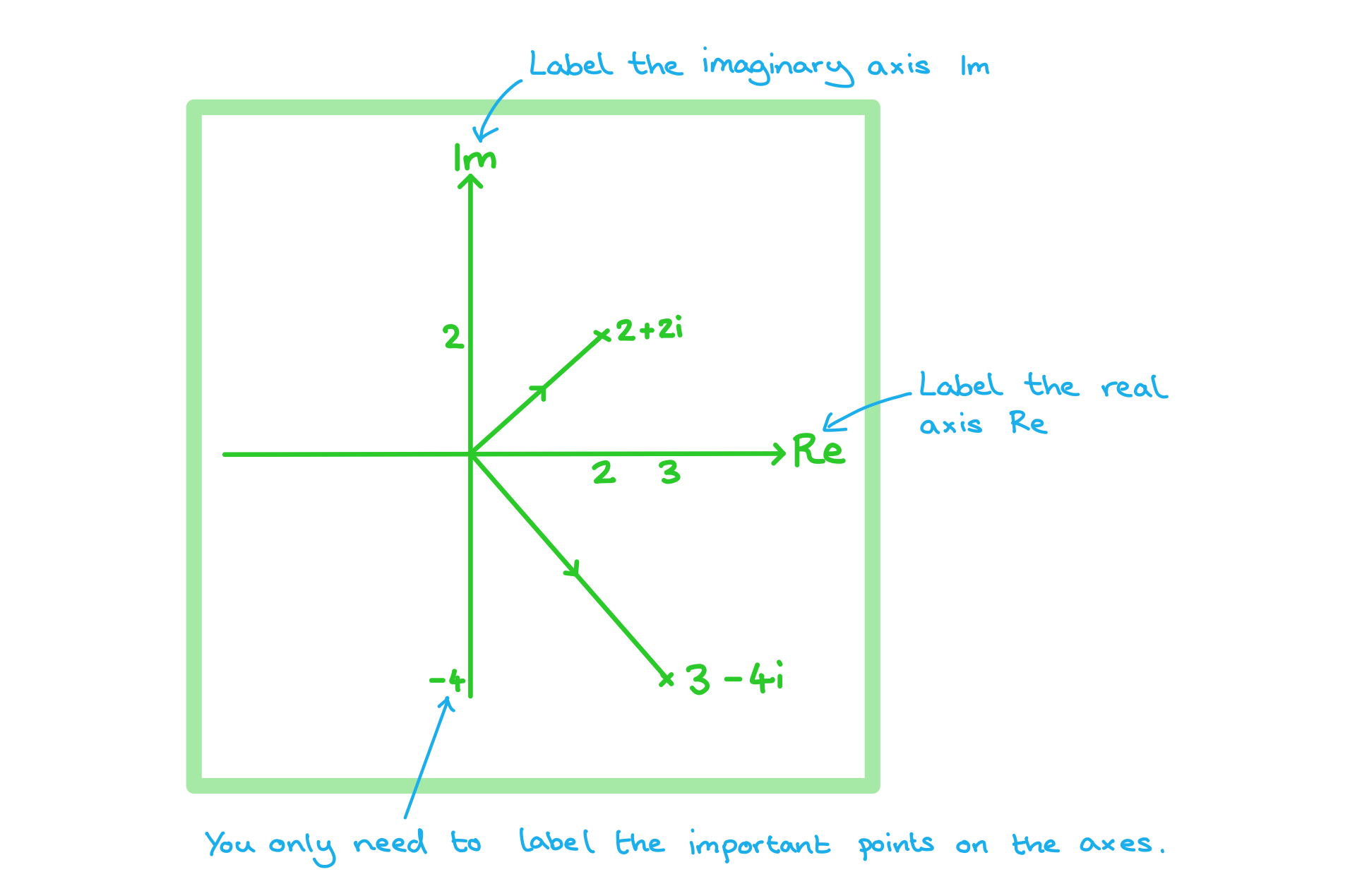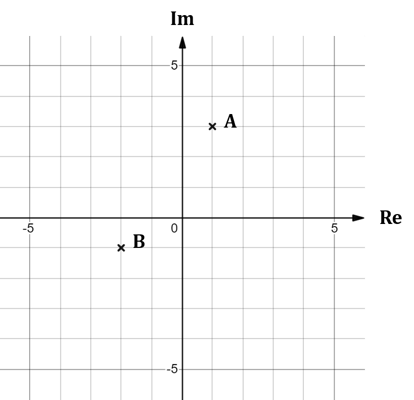Argand Diagrams
What is the complex plane?
- The complex plane, sometimes also known as the Argand plane, is a two-dimensional plane on which complex numbers can be represented geometrically
- It is similar to a two-dimensional Cartesian coordinate grid
- The x-axis is known as the real axis (Re)
- The y-axis is known as the imaginary axis (Im)
- The complex plane emphasises the fact that a complex number is two dimensional
- i.e it has two parts, a real and imaginary part
- Whereas a real number only has one dimension represented on a number line (the x-axis only)
What is an Argand diagram?
- An Argand diagram is a geometrical representation of complex numbers on a complex plane
- A complex number can be represented as either a point or a vector
- The complex number x + yi is represented by the point with cartesian coordinate (x, y)
- The real part is represented by the point on the real (x-) axis
- The imaginary part is represented by the point on the imaginary (y-) axis
- Complex numbers are often represented as vectors
- A line segment is drawn from the origin to the cartesian coordinate point
- An arrow is added in the direction away from the origin
- This allows for geometrical representations of complex numbers

Exam Tip
- When setting up an Argand diagram you do not need to draw fully scaled axes, you only need the essential information for the points you want to show, this will save a lot of time
Worked Example
a)
Plot the complex numbers z1 = 2 + 2i and z2 = 3 – 4i as points on an Argand diagram.

b)
Write down the complex numbers represented by the points A and B on the Argand diagram below.


